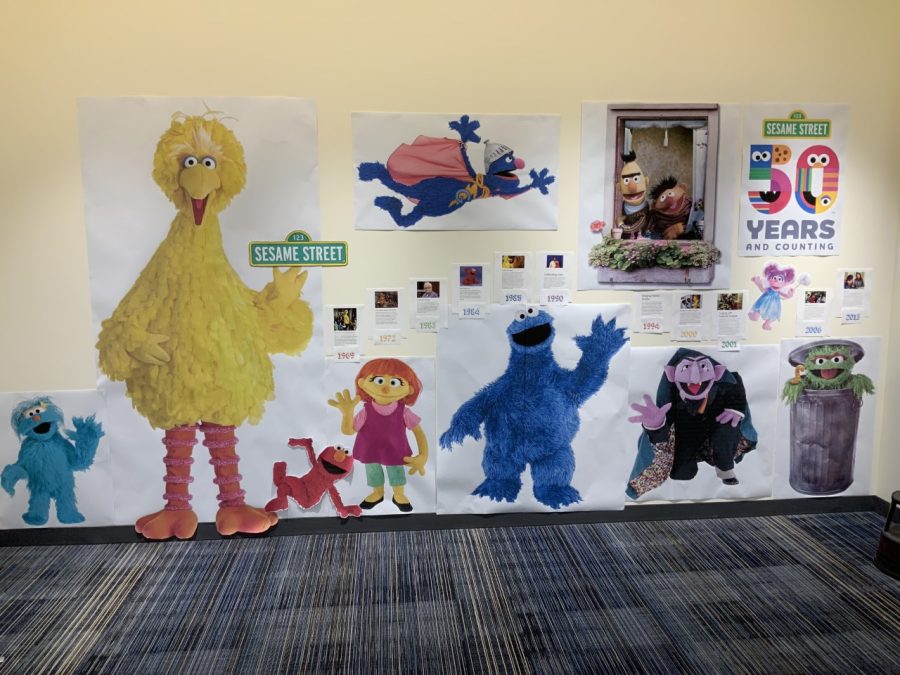Library celebrates Sesame Street’s 50th
The anniversary was highlighted by a life- size character display
2019 marks the 50th anniversary of the beloved children’s show “Sesame Street,” which first aired in Nov. 1969. To commemorate the show’s anniversary, Librarian Susan Peterson and her colleagues set up a life-size display of characters like Big Bird, Elmo, and Cookie Monster on the library’s south wall.
“We were inspired to put up the display just because I think every person in this building at some point, hopefully, had a connection to Sesame Street,” said Peterson. “I thought it would be kind of an interesting thing to do. We’re going to add a timeline so that you can see the ways “Sesame Street” revolutionized education.”
Sesame Street was a hugely influential show when it first aired. It pioneered children’s programming and allowed millions of kids — notably, those without access to a proper education — to learn basic concepts like counting numbers and reciting the alphabet.
It also dealt with deeper issues such as death and race, and had the most diverse cast American public television had ever seen.
“They took on issues that most people would say, ‘These aren’t topics for four year olds,’” said Peterson. “When Mr. Hooper died they actually called it what it was and did a whole series on that. And they addressed 9/11, they addressed autism, the AIDS crisis and how it affects children if their parents have AIDS, so we thought we would celebrate it. C’mon, who wouldn’t want to stand next to a life size Big Bird?”
Despite being a passionate fan, Peterson did not fully embrace Sesame Street until she had children.
“When I was little Sesame Street had just started. I remember watching it but I was not a fan. I actually liked the Electric Company because they were infinitelycooler,” said Peterson.
“But having children and watching it as a parent with a kid brought on a little nostalgia. 50 years of education is an amazing accomplishment.” The librarians collaborated to print out life-size renditions of the characters and put them up on the wall in early November.
“[The display] was a collaborative effort between pretty much all the librarians,” said Peterson. “[Marc] Garneau was the wizard with making [the cutouts] to scale and putting them together. Big Bird is literally cut down the middle, we had to do that with the color printer because there was no way to make him as big as he needed to be. We tried to do everything to scale. We looked at pictures to compare sizes. For Oscar the Grouch, we figured out how big the can had to be and then scaled his body to fit the estimate. We were very precise.”









































